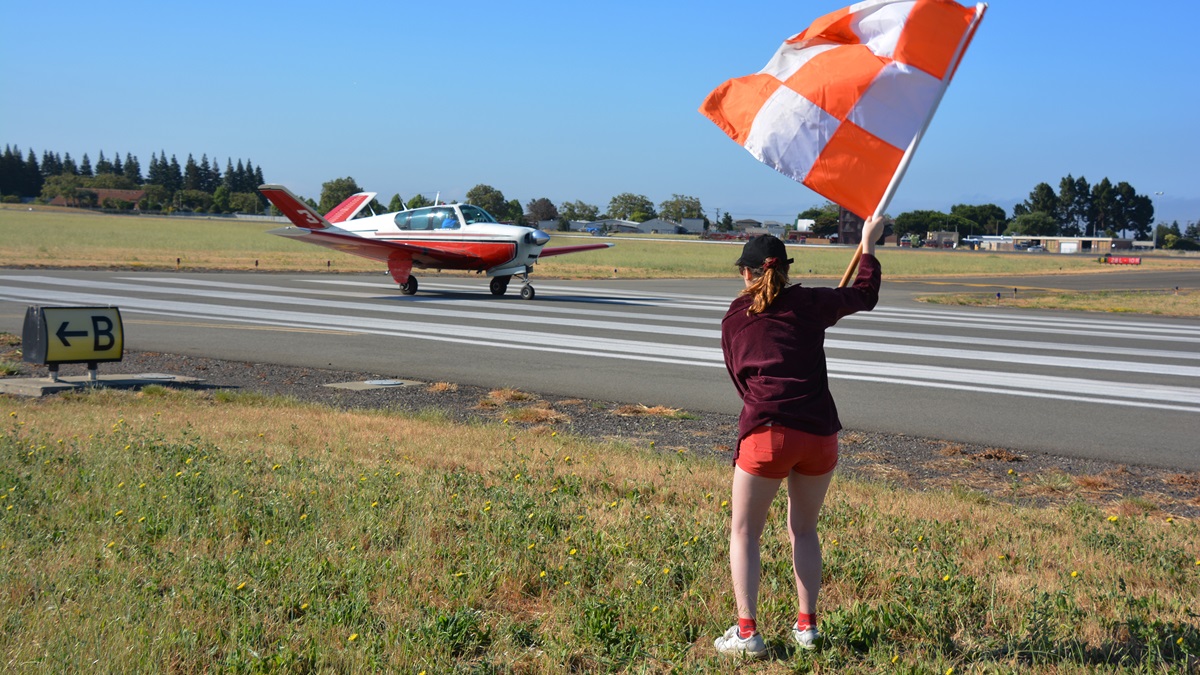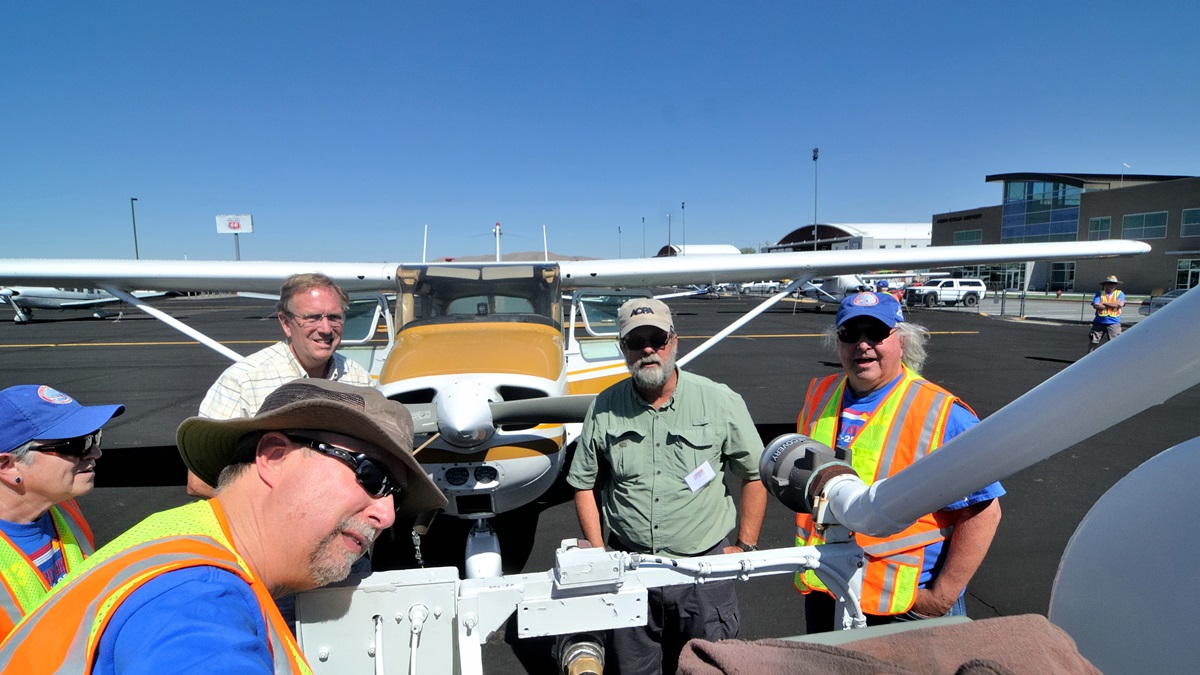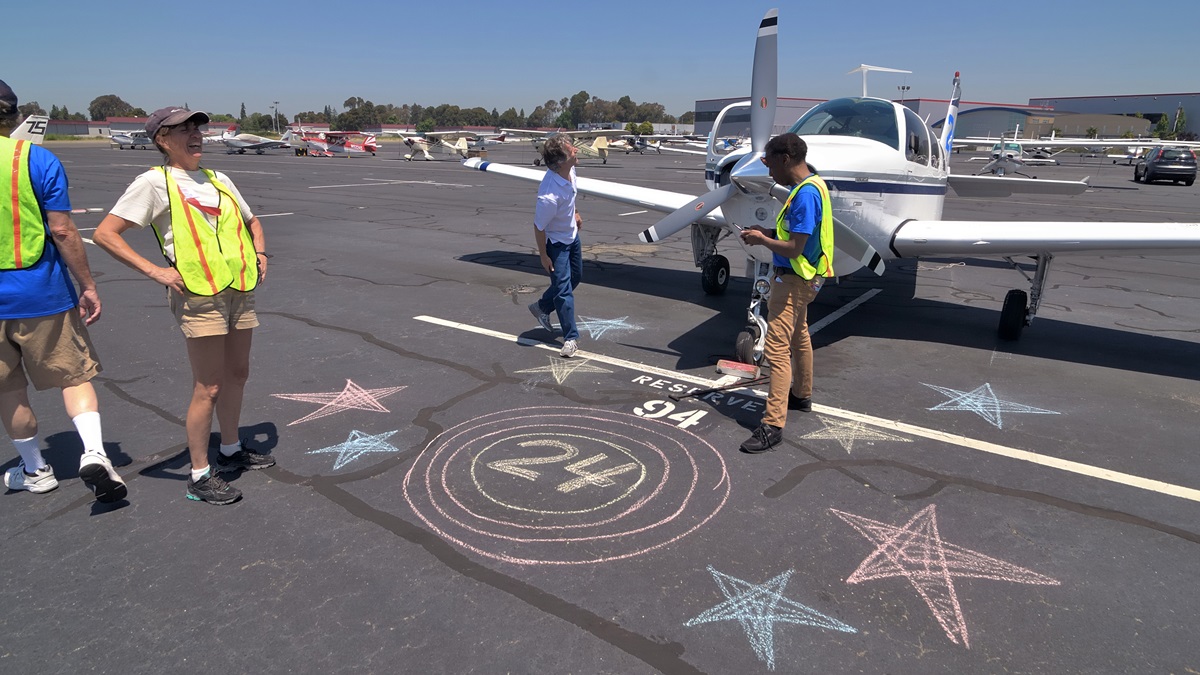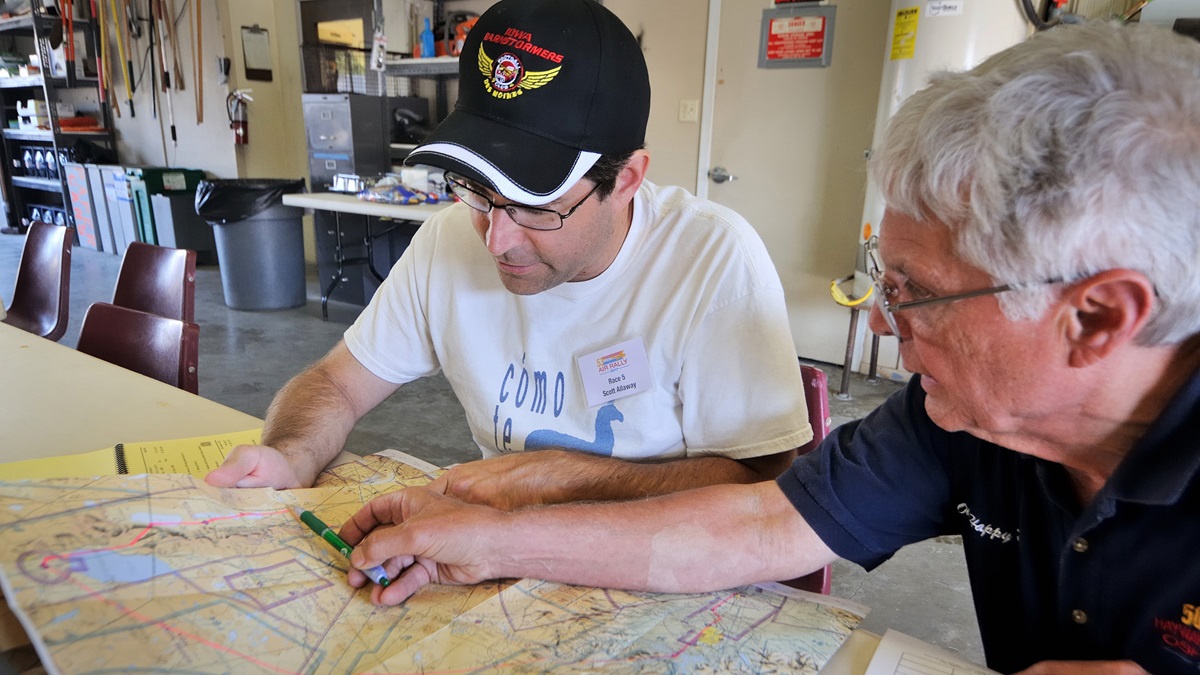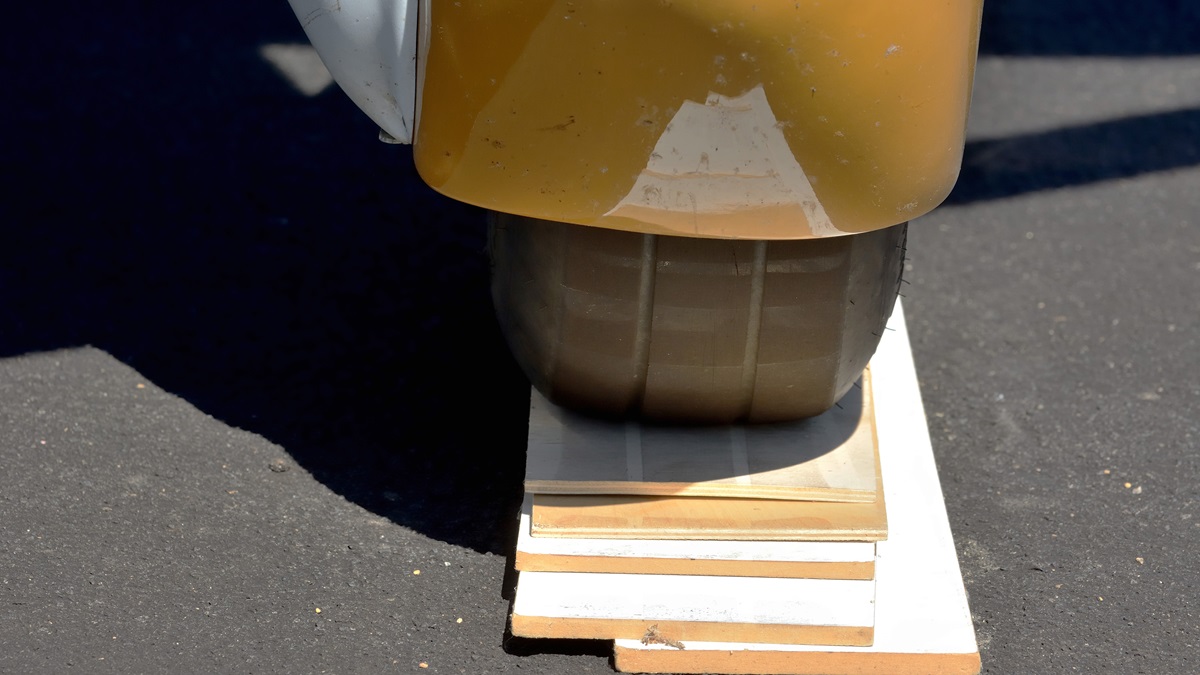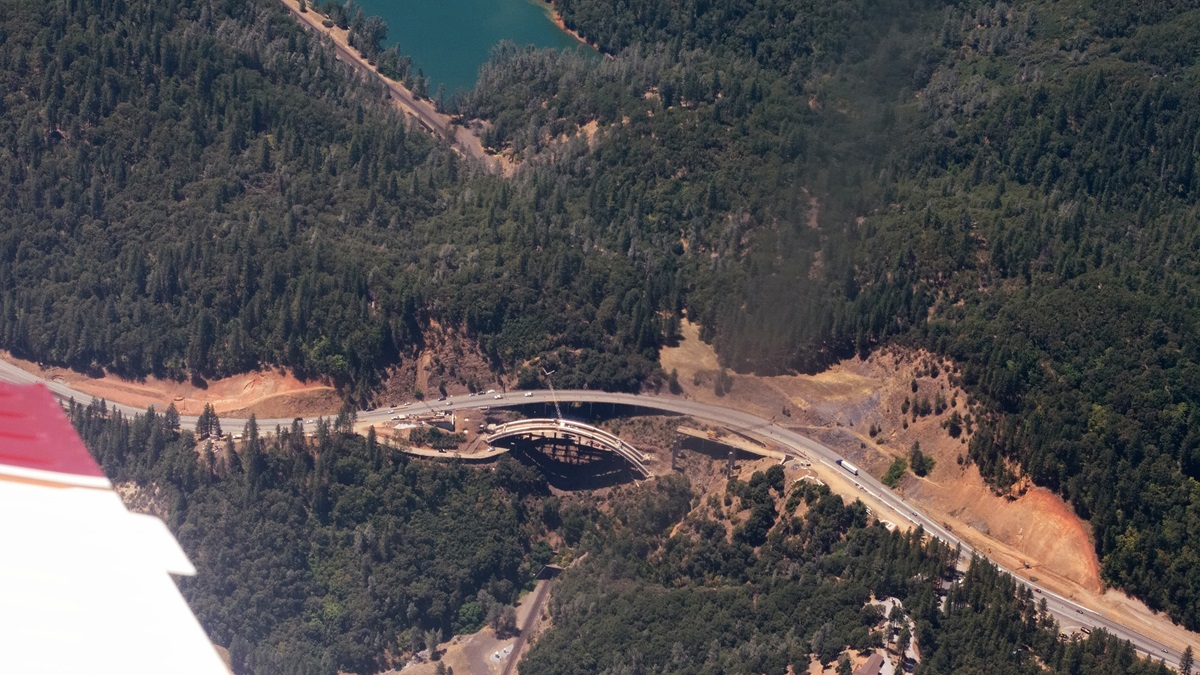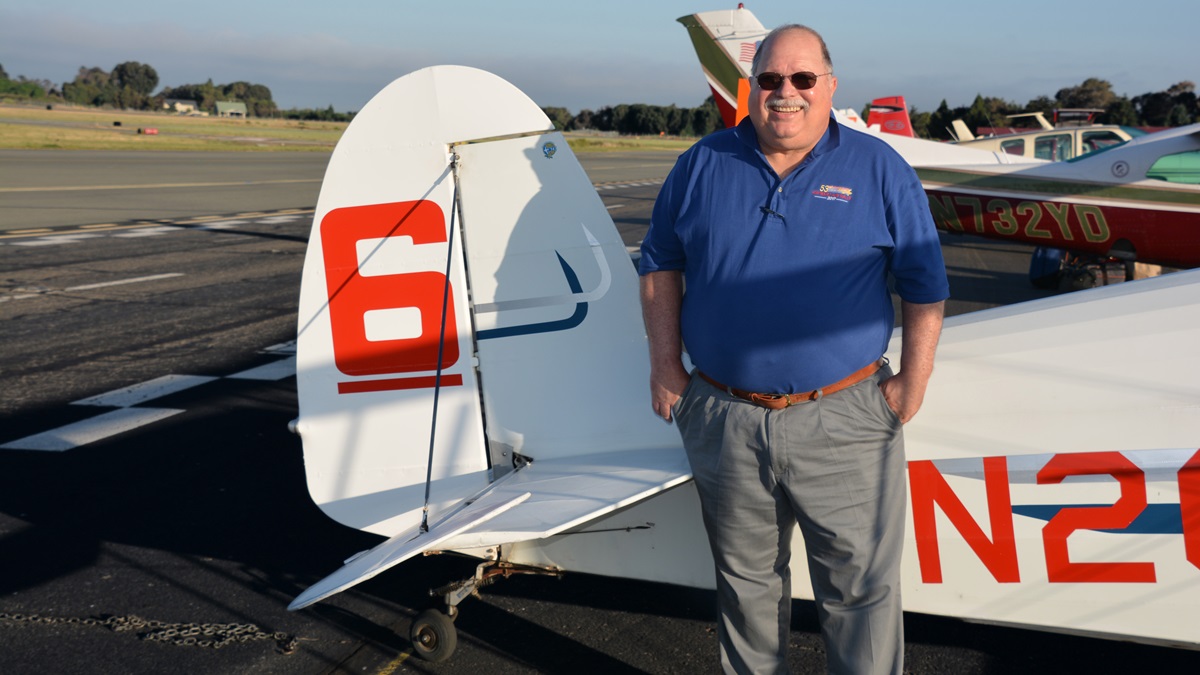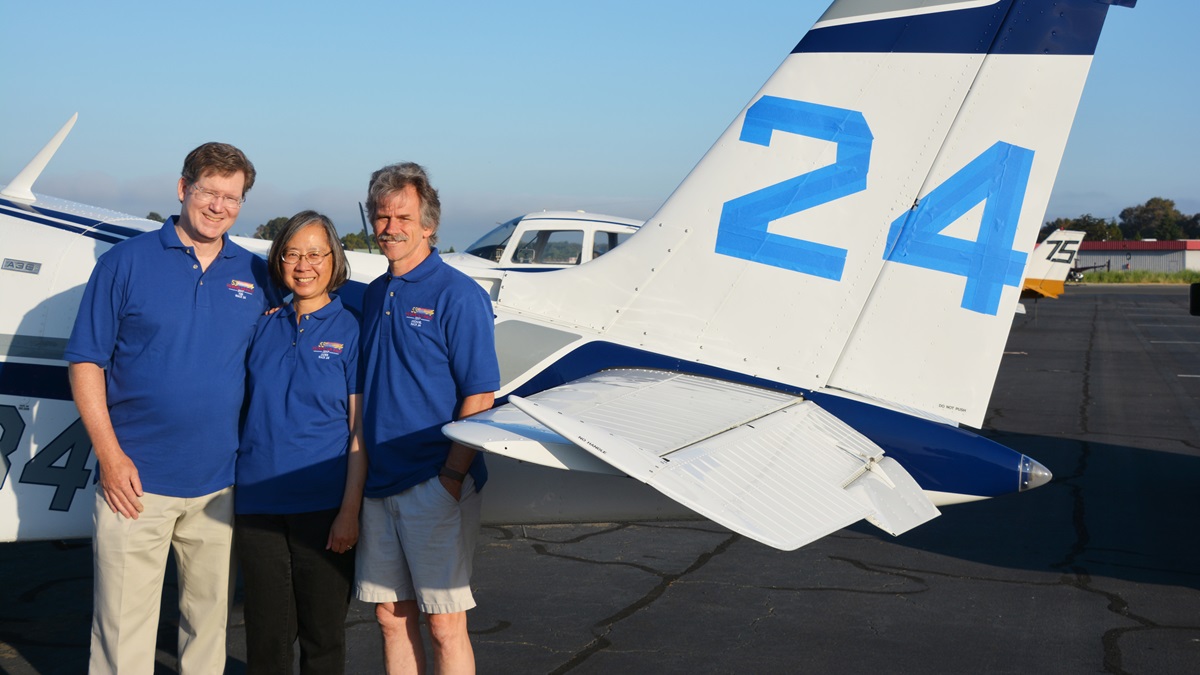Racing against the plan
Hayward Air Rally emphasizes pilotage, precision
That’s exactly what 13 teams—some with two pilots, others with one flying solo—sought to do June 22 through 25, 2017, as part of the Hayward Air Rally. The teams journeyed from Hayward, California, to Reno/Stead Airport in Nevada by way of Redding, California. This is not a race; crews fly against their planned time and fuel consumption. Every second, and fraction of a gallon, higher or lower than planned will earn penalty points. Traditional flight planning and pilotage skills are emphasized and scoring is like golf—the lowest number wins. It also may be the only time you hear pilots complain when they burned less fuel than they expected during a flight.
How close do pilots come? This year a team hit one of its leg times exactly; three missed one by one second; and two others missed one by three seconds. The majority of legs were flown within 30 seconds of their planned times, and fuel-calculation accuracy was nearly as impressive—the best leg, 0.11 gallons off. But the reward is in completion, and it’s clear that even the higher-scoring teams are having a good time.
“It’s a lot of fun,” said Tom Neale, co-chairman of the Hayward Air Rally Committee. “There’s a serious side to it, too. We’re trying to get people to polish their VFR navigation skills. We really stress the safety and proficiency aspects.” The last-place finisher wins the Tail End Charlie award. “We’ve had some people who compete for that,” Neale said. “When they try, they usually don’t win it.”
Neale said the rally, now entering its fifty-fourth year, grew from a personal challenge between pilots who were also Hayward city officials, and is the longest continually held proficiency flying event in the United States.
One of the sponsors is the city of Hayward, which contributes $5,000 each year. “It’s a piece of Hayward history,” said Hayward Executive Airport Manager Doug McNeeley. “Where else can you go where they’re grading you on pilotage and cross-country navigation skills?”
Race Team #8
Climbing through 3,000 feet over Livermore, California, on rally day, the outside temperature jumps from 65 degrees Fahrenheit to 80 in the Beechcraft Bonanza H35 flown by Kim Purcell and her husband, Rob Kirkpatrick. “Now we’re getting that valley flow. Our new course is going to be 057 degrees—I’ll tell you when. We’re behind by two minutes, which we already knew,” he says.
“I do the planning and she does the flying,” Kirkpatrick adds. “It’s the only time of the year I can tell her what to do.”
“And I have to listen,” Purcell laughs.
On a hillside near Rio Vista, wind turbines spin lazily below as a checkpoint approaches. “I’m going to put it off your side,” Purcell tells Kirkpatrick. A steep bank reveals an ag strip with no runway markings. (Flying directly over a checkpoint can make it impossible to identify.) Although they carry a GPS tracker, Kirkpatrick photographs the strip with his cellphone, as proof it was located.
The team is navigating in the traditional or analog class; VORs and NDBs are allowed but GPS is not. “Maxwell [VOR] is out of service,” Kirkpatrick observes. “I’m pulling a radial off of Williams.” There’s intermittent chatter on the common air-to-air frequency rally pilots monitor, and one offers ADS-B groundspeeds for several aircraft. There’s also discussion as to whether this is useful information or overload.
Nearing the first leg’s end, the team calculates they’re two minutes ahead of schedule—and commences a two-minute left turn west of the Red Bluff VOR. Then, suddenly, they’re behind schedule. Purcell accelerates the Bonanza and dives for the timing line. They finish the leg 81 seconds behind their projection, and place fifth overall.
Race team #1
Departing the Redding fuel stop, Chris Verbil has calculated that the second leg will take 2:02:14 to fly in his Socata Trinidad TC. It’s 68 degrees Fahrenheit at 6,500 feet—considerably warmer than standard, validating the decision to launch aircraft an hour earlier than normal—as snowcapped Mount Shasta slides past his left wing.
A longtime racer, Verbil now competes in the digital class, accepting additional penalty points in exchange for the use of technology (timing points for digital contestants are tripled, and fuel points are doubled). “I used to stay up half the night planning,” he said. “GPS and tablets make this wildly easier, but you can still get wildly lost and run out of gas. We’ve got too many people doing that—people have gotten remarkably good at pushing the Direct To button.” Flying in the digital class is not as easy as you’d think, he’s quick to add.
Looking down, there’s “a lot of logging roads—and nothing for pilotage. There’s not a lot to work with north of Redding,” Verbil comments as he detects a wind shift and resets his autopilot. (Autopilot use is allowed in both classes.) “The real strategy is not to chase everything at a checkpoint. You have to trust your plan.”
The winds aloft, forecast as light and variable, shift again. “Someone’s lying to me,” he grumbles about the forecast. Verbil’s groundspeed is 7 knots slower than expected, but he’s running slightly early.
A few checkpoints later, groundspeed is 10 knots faster than planned. “You’ve got to catch that right away. This late in the course, you don’t have much chance to correct.” Then Virbil’s iPad shows a bright red temperature warning and shuts off. “Now I’m hosed,” he says.
Eight miles from the segment’s timing line, he realizes he’s 18 seconds early. He pulls off some power, and enriches the mixture to keep the turbocharged Lycoming TIO-540 cool. Later, he learns he hit his time exactly, the only pilot to do so this year—although the day sees 10 segment times within 10 seconds of plan. “It’s amazing when it comes together, but the fuel is the hard part,” Virbil says. He burns 1.4 gallons less than anticipated and is assessed 218 fuel points for the segment, securing fourth place for the day.
Race team #50
Keira Engdahl may only be 12 years old, but she’s a seasoned rally crewmember.
“I’ve had second three times out of my five years,” she said. “Dad’s gotten first before.” They had just flown their Beech Sierra to her third second place, only 12 points behind the winners. Keira looks forward to the rally each year. “I think it’s a fun father/daughter time. I like this kind of thing. My mom asks if she can come, and I say no.”
“Keira is great,” said her father, Thomas Engdahl. She is his third co-pilot over 14 rallies. “We talk about what she needs to do, and she does it.” He also appreciates the focus required by the competition. “It’s the one time you fly when you actually have to create a flight plan and go through all the details.”
“I do the timing and finding the checkpoints,” Keira explained. “I like to take a nap on the leg from Redding to Reno.”
Race team #24
Tim Ronan and co-pilot Michael Saboff got involved in the rally through their club, Seagull Flying Club at San Jose International. Saboff learned about the rally from another club member, Hal Beers, and started competing with him in 2005. When Beers stepped aside, Ronan jumped into the left seat of the club’s Beech Bonanza A36 in 2013.
“When Hal and I started this, we figured, ‘How difficult could this be?’” Saboff said. “I knew the terms pilotage and dead reckoning, but I wasn’t a performer of the art. The rally has really taught me how to look out the window with the chart in hand, and say, ‘That’s where we are.’ It really helped me step up my game.”
“The first year that I got involved, we were in the analog class,” Ronan said. GPS navigation displays were covered, and they flew using pilotage. A glass-cockpit upgrade to the Bonanza, including installation of a primary flight display, pushed them into the digital class—and reduced their planning time the night before, from three or four hours to about an hour, he added.
“One of the equalizers in the rally is the checkpoints. For planning purposes, it’s pretty straightforward. You still have to get over the mark and answer the questions [identifying them]. But using the GPS, you can be too accurate—if you fly directly over the top, you can miss the airport,” Ronan said.
Saboff manages the navigation from the right seat, relying on a tablet. He believes if he and Ronan reversed roles, “we would not do well. I think it would be a lot of fun, but it wouldn’t be competitive.”
Fuel is more challenging to determine than time, Saboff added. “There’s the POH, and then there’s the aircraft, and then there’s how you fly the aircraft. All of those come into play. It’s very difficult to plan. If I’m flying a cross-country and I’m within two to four gallons, that’s great—but in the rally, I’m not going to be competitive.”
“Fuel is still evolving in our formula. It seems there’s something new each year that we haven’t figured out,” Ronan noted. They won the event for the second consecutive year and will compete next year in the Masters Class, a separate category for pilots who have won first place twice.
Race team #6
Brian Dal Porto placed last this year, flying solo in his two-place, open-cockpit Marquart Charger biplane—recording an average groundspeed of just 77.5 knots. (Dal Porto had to make an extra fuel stop on the final, 297-nm leg to Reno.) His only previous rally was the fiftieth anniversary event in 2014, a three-day journey to Oshkosh. “For years I’d wanted to do it, and just couldn’t make it work,” he said.
The aerobatic airplane always requires a hand on the stick. “You’re out in the sun and the wind all the time—it’s like riding a motorcycle,” said Dal Porto, who navigates using an iPad. “I’ve lost three charts trying to refold them.” There’s no place in the cramped cockpit for a water bottle, he added.
Although his airplane isn’t ideally suited to the rally—or, perhaps, because of that—Dal Porto enjoys the challenge, and said he plans to fly it again next year.
Succeeding
“There are a lot of techniques that people have developed over 50 years,” Neale noted. For example, he said, some people will plan the flight and add a few minutes—then they’ll circle before crossing the timing line to run off extra time that wasn’t needed. Others will vary airspeed as they near the timing line, but power changes can have a negative effect on the fuel score.
Sometimes the unexpected happens. A Cessna 182RG could not launch for the rally because of a failed magneto, but its crew hitched a ride with Neale, who didn’t compete. At the Redding fuel stop Mike Citro, flying a Piper Cherokee as Race #5, lost co-pilot Scott Allaway when he was called home by his pregnant wife—so pilot Rod Fite, whose Cessna was grounded with the bad mag, became Citro’s co-pilot for the second leg. And Neale flew Allaway back to Hayward just in time for the birth of his son, Nathan.
Jeff Zalewski of Marin County, California, was “super disappointed” family obligations kept him from participating this year; he’s flown most years since 2006. He’d been a pilot only two years before his first rally, when a friend needed a co-pilot. “It got me with a group of experienced pilots. And now I have absolutely mastered fundamental skills,” Zalewski said. “I can go anywhere—safely. And I can change destinations any time—safely. I’m to the point now that when I fly, I don’t even like having [the GPS] on.”
Email [email protected]

